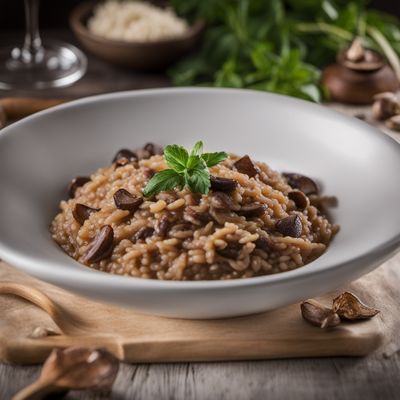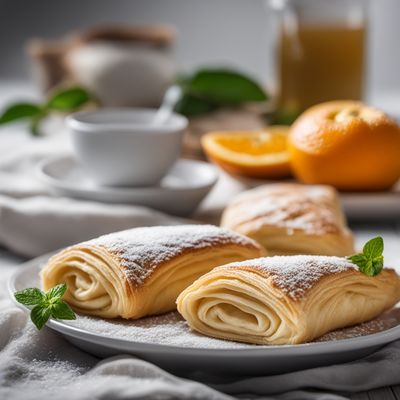
Recipe
Molecular Gastronomy Lasagne
Layers of Molecular Delight: A Modern Twist on Classic Lasagne
4.9 out of 5
In the realm of molecular gastronomy, we reimagine the traditional Italian lasagne, infusing it with innovative techniques and flavors. This avant-garde version of lasagne combines science and artistry to create a visually stunning and delectable dish that will captivate your taste buds.
Metadata
Preparation time
60 minutes
Cooking time
12 hours (for sous vide beef ragu)
Total time
12 hours and 60 minutes
Yields
4 servings
Preparation difficulty
Medium
Suitable for
Vegetarian, Gluten-free (if using gluten-free lasagne sheets), Low-carb (if using zucchini or eggplant sheets instead of pasta), Keto-friendly (if using zucchini or eggplant sheets instead of pasta), Molecular gastronomy enthusiasts
Allergens
Milk, Wheat (if using regular lasagne sheets)
Not suitable for
Vegan, Dairy-free, Nut-free, Paleo, High sodium
Ingredients
While the traditional lasagne is known for its comforting layers of pasta, sauce, and cheese, our molecular gastronomy adaptation takes a more experimental approach. We incorporate unique textures, unexpected flavors, and playful presentations to elevate this beloved Italian dish into a modern culinary masterpiece. We alse have the original recipe for Lasagne, so you can check it out.
-
200g (7 oz) lasagne sheets 200g (7 oz) lasagne sheets
-
500ml (2 cups) tomato gel 500ml (2 cups) tomato gel
-
200g (7 oz) mozzarella foam 200g (7 oz) mozzarella foam
-
100g (3.5 oz) Parmesan air 100g (3.5 oz) Parmesan air
-
50g (1.8 oz) basil caviar 50g (1.8 oz) basil caviar
-
100g (3.5 oz) sous vide beef ragu 100g (3.5 oz) sous vide beef ragu
-
50g (1.8 oz) dehydrated spinach powder 50g (1.8 oz) dehydrated spinach powder
-
20g (0.7 oz) olive oil spheres 20g (0.7 oz) olive oil spheres
-
Salt and pepper to taste Salt and pepper to taste
Nutrition
- Calories (kcal / KJ): 450 kcal / 1884 KJ
- Fat (total, saturated): 25g, 12g
- Carbohydrates (total, sugars): 35g, 8g
- Protein: 22g
- Fiber: 4g
- Salt: 2g
Preparation
-
1.Preheat the water bath to 65°C (149°F) for the sous vide beef ragu.
-
2.Cook the lasagne sheets in boiling water until al dente. Drain and set aside.
-
3.Prepare the tomato gel by blending fresh tomatoes, straining the mixture, and adding agar-agar. Set in a shallow dish to solidify.
-
4.Create the mozzarella foam by blending mozzarella cheese, water, and soy lecithin. Use a handheld immersion blender to create a frothy foam.
-
5.Make the Parmesan air by combining grated Parmesan cheese and maltodextrin in a food processor until a powdery texture is achieved.
-
6.Prepare the basil caviar using the spherification technique. Mix basil juice with sodium alginate and drop into a calcium chloride bath to form caviar-like spheres.
-
7.Sous vide the beef ragu at 65°C (149°F) for 12 hours to achieve tender meat.
-
8.Assemble the lasagne by layering the cooked lasagne sheets with tomato gel, mozzarella foam, beef ragu, dehydrated spinach powder, and olive oil spheres. Repeat the layers until desired height is reached.
-
9.Garnish with basil caviar and Parmesan air. Season with salt and pepper to taste.
Treat your ingredients with care...
- Lasagne sheets — Cook them al dente to ensure they retain their texture when layered.
- Tomato gel — Use ripe and flavorful tomatoes for the best results.
- Mozzarella foam — Ensure the mozzarella is well-blended to achieve a light and airy foam.
- Basil caviar — Follow the spherification technique carefully to create perfect caviar-like spheres.
- Sous vide beef ragu — Marinate the beef with herbs and spices before vacuum-sealing for enhanced flavor.
Tips & Tricks
- Experiment with different flavors for the tomato gel, such as roasted red pepper or sun-dried tomato.
- Add a touch of truffle oil to the mozzarella foam for an earthy aroma.
- Use a dehydrator to make your own spinach powder for a vibrant green color.
- For a vegetarian version, substitute the beef ragu with a mushroom ragu.
- Serve the lasagne on a chilled plate to maintain the stability of the molecular components.
Serving advice
Serve the Molecular Gastronomy Lasagne as a centerpiece on individual plates. Encourage your guests to explore the layers and textures, savoring each bite. Accompany it with a side salad to balance the richness of the dish.
Presentation advice
Create an artistic presentation by arranging the basil caviar and Parmesan air in a visually appealing pattern on top of the lasagne. Garnish with fresh basil leaves and a drizzle of olive oil for an elegant touch.
More recipes...
For Lasagne » Browse all
For Italian cuisine » Browse all
More Italian cuisine dishes » Browse all

Gelato alla fragola
Strawberry Gelato
Gelato alla fragola is a classic Italian dessert that is perfect for any occasion. It is a rich and creamy dessert that is sure to impress your guests.

Acquacotta
Tuscan soup
Acquacotta is a traditional Italian soup that originated in the region of Tuscany. It is a simple and hearty soup that is perfect for cold winter days.

Castagne alla valdostana
Valdostana Chestnuts
Castagne alla valdostana is a traditional Italian dish made with chestnuts and cheese. The dish is hearty and flavorful, making it a perfect...











